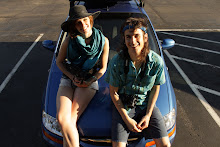Although the Alaskan growing season is shorter, the long days of summer sunlight (maybe not this season with a record breaking amount of rain…) allow for some intense crop production. This intensity is displayed every year at the Alaska State Fair in Palmer where world records for giant produce are broken. One of the most notable competing crops is the giant cabbage. Steve Hubacek from Wasilla broke the world record in 2009 with a 127 lb cabbage! He took 1st again this year in the Giant Cabbage Weigh Off with his cabbage weighing in at 105.6 lbs to bring home the $2000 prize.
If you go to one of many Alaskan farmers’ markets, most of which are concentrated in the south central region of the Matanuska Valley and the Kenai Peninsula, don’t expect to see 100 lb + cabbages for sale at $2000. The giant vegetables are mainly a novelty for agricultural hobbyists. However, you can expect to see a bounty of fresh, great tasting local produce. You can also expect to see the “Alaska GROWN” slogan and logo everywhere. The slogan is represented with great pride throughout the communities. We’ve spent few days traveling in Alaska where we haven’t seen someone sporting the “Alaska GROWN” sweatshirt.
After perusing around some of the markets, we tried a rhubarb lemonade, which was a delicious local treat!
If you go to one of many Alaskan farmers’ markets, most of which are concentrated in the south central region of the Matanuska Valley and the Kenai Peninsula, don’t expect to see 100 lb + cabbages for sale at $2000. The giant vegetables are mainly a novelty for agricultural hobbyists. However, you can expect to see a bounty of fresh, great tasting local produce. You can also expect to see the “Alaska GROWN” slogan and logo everywhere. The slogan is represented with great pride throughout the communities. We’ve spent few days traveling in Alaska where we haven’t seen someone sporting the “Alaska GROWN” sweatshirt.
After perusing around some of the markets, we tried a rhubarb lemonade, which was a delicious local treat!
But what really caught our attention was the “Fresh International Gardens” stand. It wasn’t their produce that stood out, although they had great produce, but the organization itself.
“Fresh International Gardens” is part of the Refugee Farmers’ Market Program, which was developed in 2007 by the Catholic Social Services Refugee Assistance and Immigration Services (RAIS) and the University of Alaska Fairbanks Cooperative Extension Service. This program helps refugees resettle in Alaska by working on a community garden where they can sell their produce at the farmer’s market. It allows refugees to learn business skills, practice English, and earn a supplemental income while gaining a sense of community. It’s a great transition for the refugees as a majority have a long cultural history of agriculture. The program is funded by donations and volunteers so all proceeds go directly to the gardeners.
This year refugees are from Bhutan and Nepal. At the market, we met 2 Nepalese gentleman and Kelly Ingram who was part of Americorps VISTA and was managing the garden. After talking with them a bit and picking up some potatoes, we exchanged emails so we could volunteer at the garden to see more of the project in action.
Kelly and I showed up to the 8,000 sq. ft plot on a Friday afternoon. There were about 10+ refugees working on controlling the weeds at the time. Some others we’re planting lettuces. Kelly Ingram greeted us and gave us some gloves to get to work. We pulled some weeds and harvested some potatoes for a few hours until it began to rain… Before leaving, the refugees worked out their schedules for the upcoming week with Ingram and we said our goodbyes.
Kelly and I showed up to the 8,000 sq. ft plot on a Friday afternoon. There were about 10+ refugees working on controlling the weeds at the time. Some others we’re planting lettuces. Kelly Ingram greeted us and gave us some gloves to get to work. We pulled some weeds and harvested some potatoes for a few hours until it began to rain… Before leaving, the refugees worked out their schedules for the upcoming week with Ingram and we said our goodbyes.









No comments:
Post a Comment